Waterfowl are typically ducks, geese, or any other large aquatic birds. They are also regarded as game birds. They live near freshwater or saltwater, alongside rivers, ponds, lakes, oceans, and swamps. Check out these 10 types of waterfowl in North America, including several examples for each.
1. Geese
Canada Goose
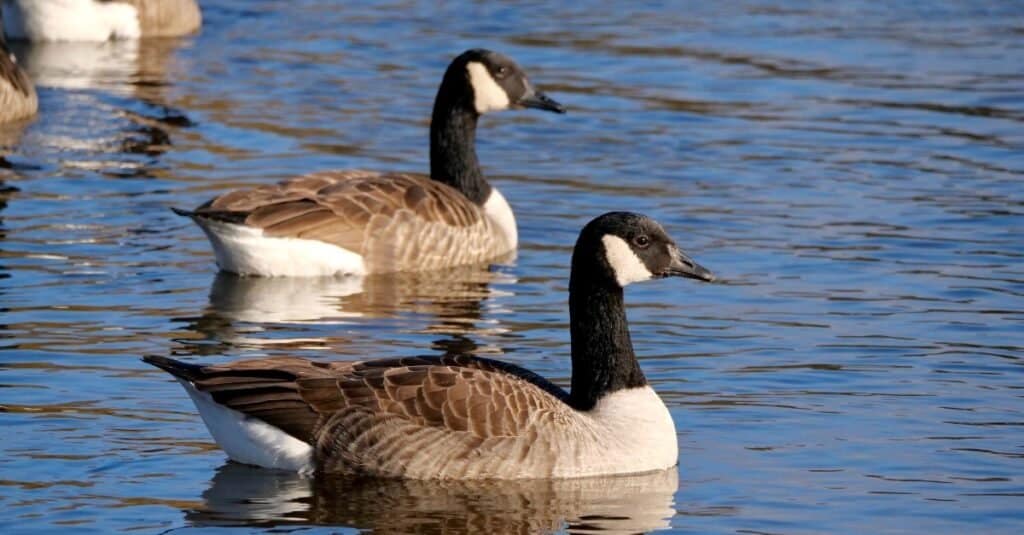
During the second year of their lives, Canada geese find a mate, and most couples stay together.
©iStock.com/yujie chen
This waterfowl is a common sight throughout North America, where they breed in Canada and winter in the United States. These familiar birds are widespread in fields and busy parks, and some stay year-round in urban and suburban areas of the Northern United States. And you might recognize them from their long V-formations, as they migrate each year.
Cackling Goose
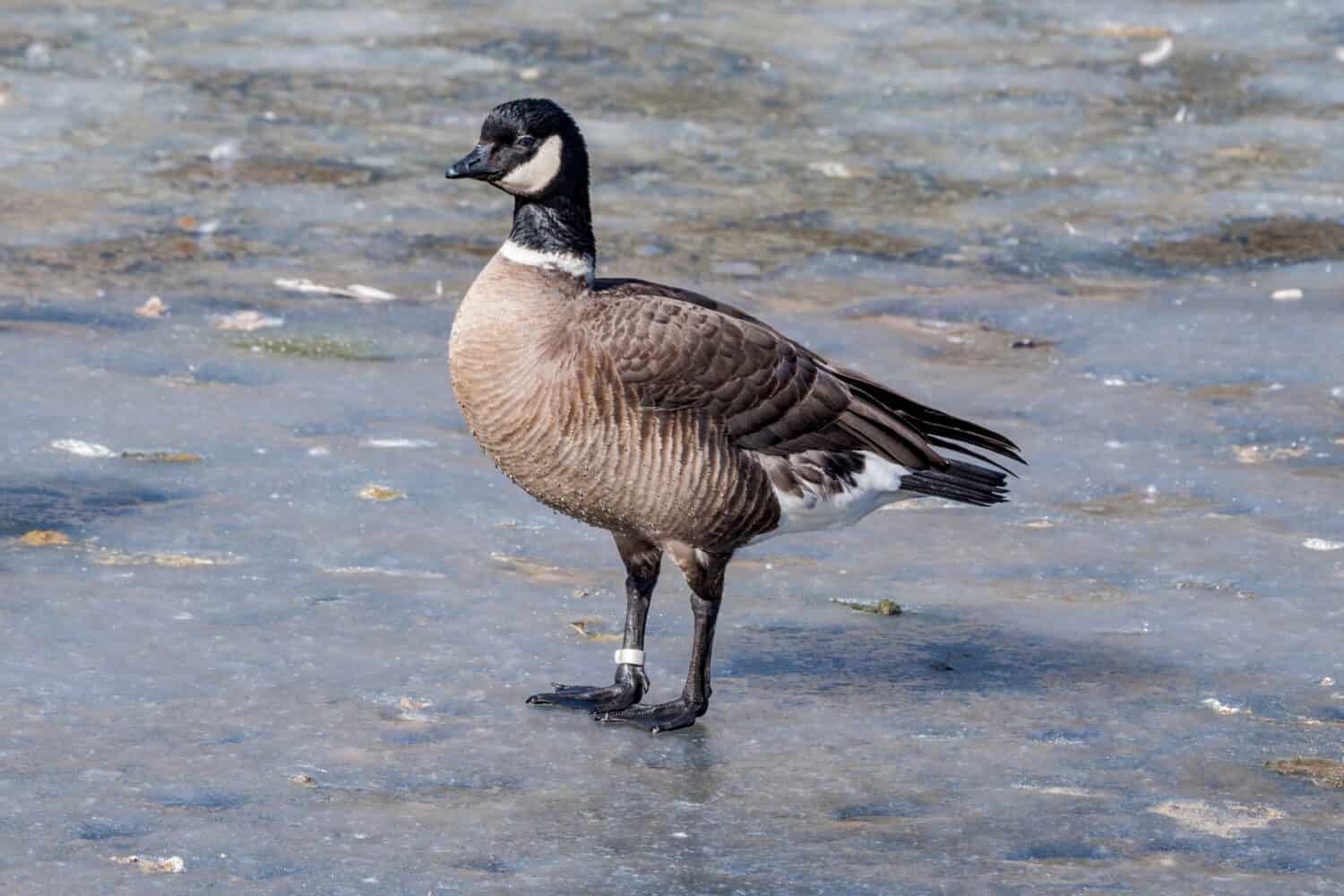
Cackling geese are smaller than Canadian geese.
©Nick Pecker/Shutterstock.com
The cackling goose is almost identical to the Canada goose, but they are separate species due to genetic differences. Cackling geese are basically miniature Canadian geese. They breed in remote regions of Northern Canada and winter primarily in the southern Great Plains. They like to forage in fields and marshes and nest along streams and ponds.
2. Swans
Tundra Swan

Tundra swans swim in freezing rivers in the winter.
©Sergey Uryadnikov/Shutterstock.com
You won’t find these Arctic birds in most of Canada and the Northern United States until migration and winter. They live near coastal waters and estuaries, but you can also find them in large flocks in agricultural fields. Their wings make a distinct whistling sound while in flight. And they have all-white plumage with yellow smudges at the base of their bills.
Trumpeter Swan
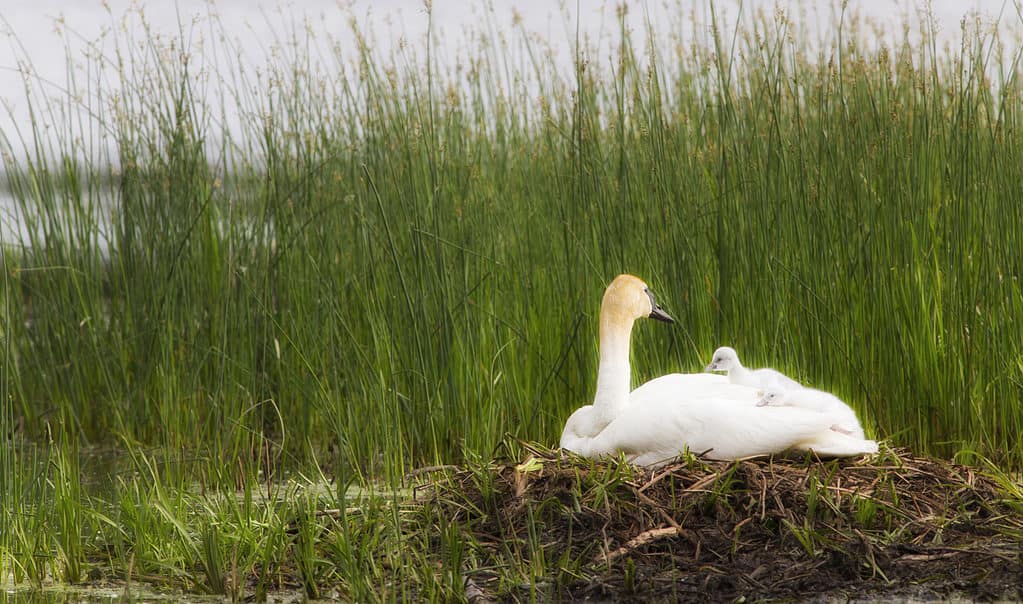
Trumpeter swans are the largest types of waterfowl in North America.
©iStock.com/JackVandenHeuvel
The trumpeter swan is the largest species of native waterfowl in North America, measuring six feet long and weighing over 25 pounds, much larger than tundra swans. These big birds breed in Alaska, Western Canada, and around the Great Lakes region. And they winter along the West Coast and central inland areas. During the nesting season, you will find them on wetlands.
3. Ducks
Mallard Duck
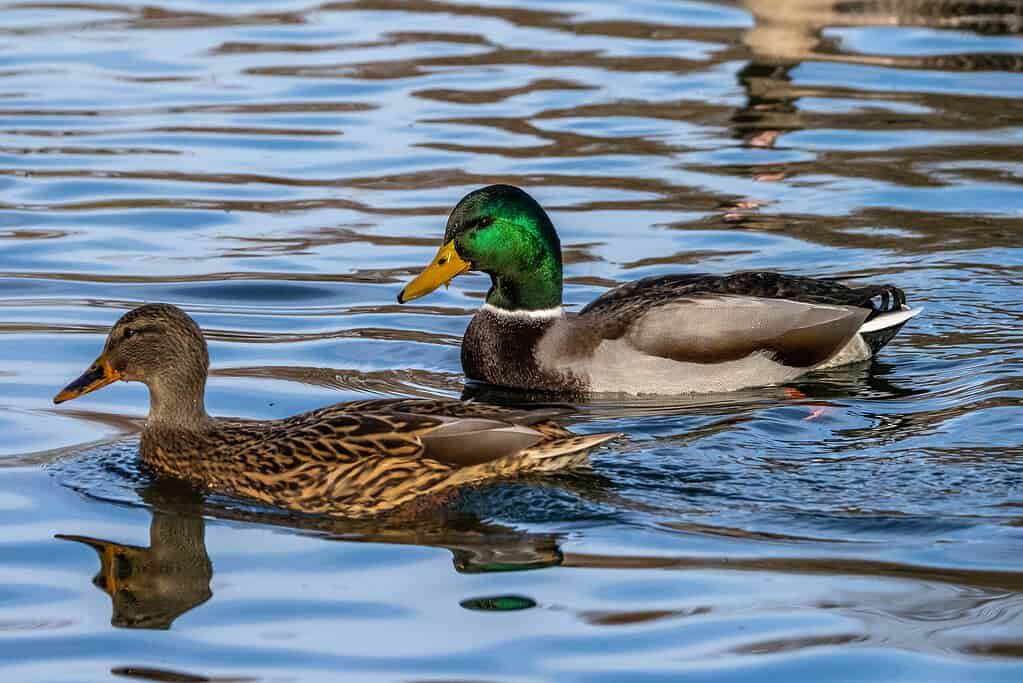
Male mallards have bright green heads and brown and cream feathers. Females are brown all over.
©iStock.com/Rudolf Ernst
Mallards are one of the most common duck species in North America and Eurasia. You will find them in parks, typically near ponds. But they can also congregate near estuaries and wetlands. Most domestic ducks descended from this species, and they are popular game birds for hunting. These birds live year-round on the west side of the United States, breed in Canada, and winter in the Eastern United States.
Wood Duck

The wood duck or Carolina duck is a species of perching duck found in North America.
©Rudolf Ernst/Shutterstock.com
The wood duck is one of the most beautiful birds in North America. These water birds feature intricate and colorful patterns. They live all year in the Eastern United States and along the West Coast. There are also some wintering populations in the Southwest and Mexico. Wood ducks inhabit wooded swamps, where they nest in trees near water.
4. Mergansers
Common Merganser
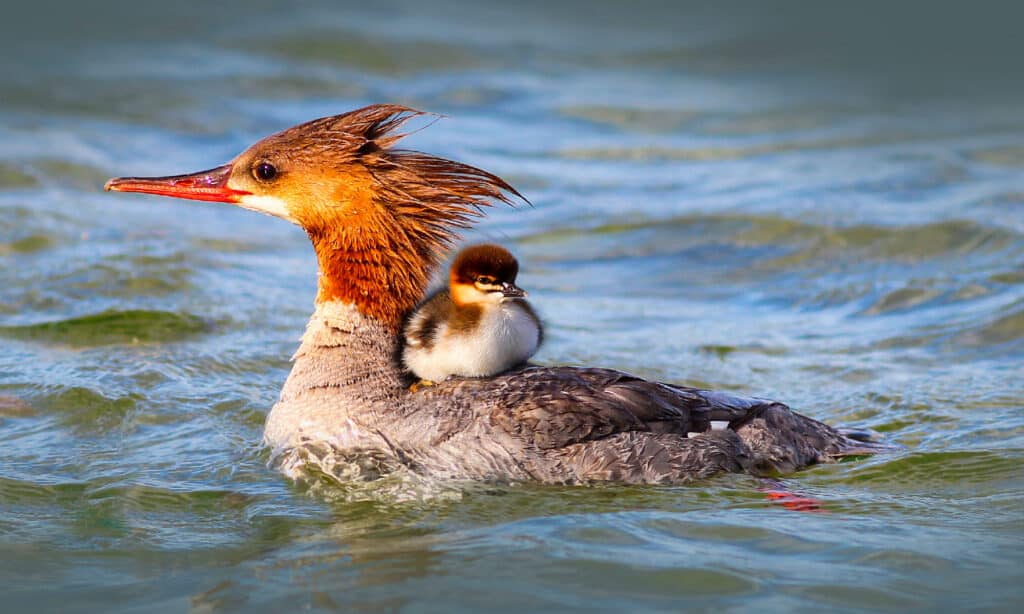
Common mergansers are sleek, elegant birds.
©iStock.com/Anna39
Mergansers are fish-eating ducks. And the common merganser is a sleek and elegant bird you can find slowly floating on rivers and coastlines. Males and females are quite different in appearance. Males are dark, iridescent green, black, and white. And females are dark gray and cinnamon brown. These birds breed in Canada and winter throughout most of the United States, except the Southeast.
Hooded Merganser
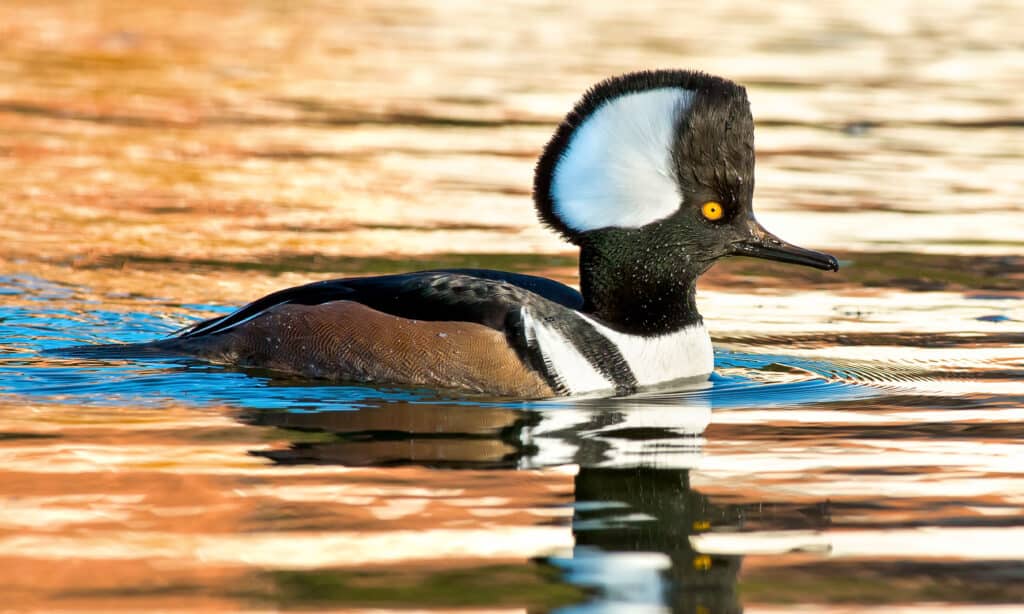
Hooded mergansers feature large crests.
©Paul Reeves Photography/Shutterstock.com
One look at this bird, and you can see why it’s called “hooded.” These extravagant ducks have large crests and beautiful multi-colored patterns. Hooded mergansers have year-round populations in the Eastern United States and wintering populations in patches in the West. This species is common in ponds and rivers, and they nest in tree cavities near the water.
5. Eiders
Common Eider
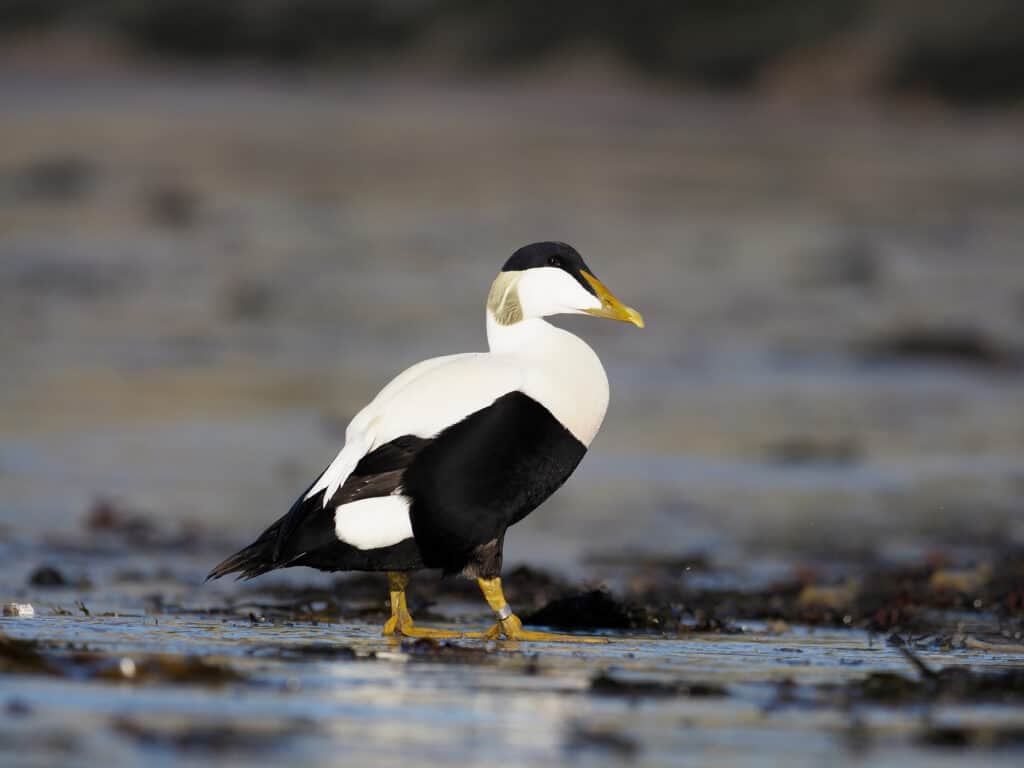
Common eider live in the Northern Hemisphere.
©Erni/Shutterstock.com
Eiders are large sea ducks that live in cooler regions. And the common eider is the largest of the northern hemisphere sea ducks. These birds never leave the cold north, except for some wintering populations that make their way to the coasts of the very upper Northeastern United States. This species gathers around rocky shores, where they dive for shellfish.
King Eider

King eiders are some of the deepest diving ducks. They can reach depths of 180 feet!
©Agami Photo Agency/Shutterstock.com
The ornately adorned king eider is one of the most stunning birds in the world. These birds breed in the tundra in the cold north and winter along the Alaskan, Eastern Canadian, and Northeastern United States coasts. Their spring migration in Alaska is one of the most spectacular sights on the continent.
6. Coots
American Coot
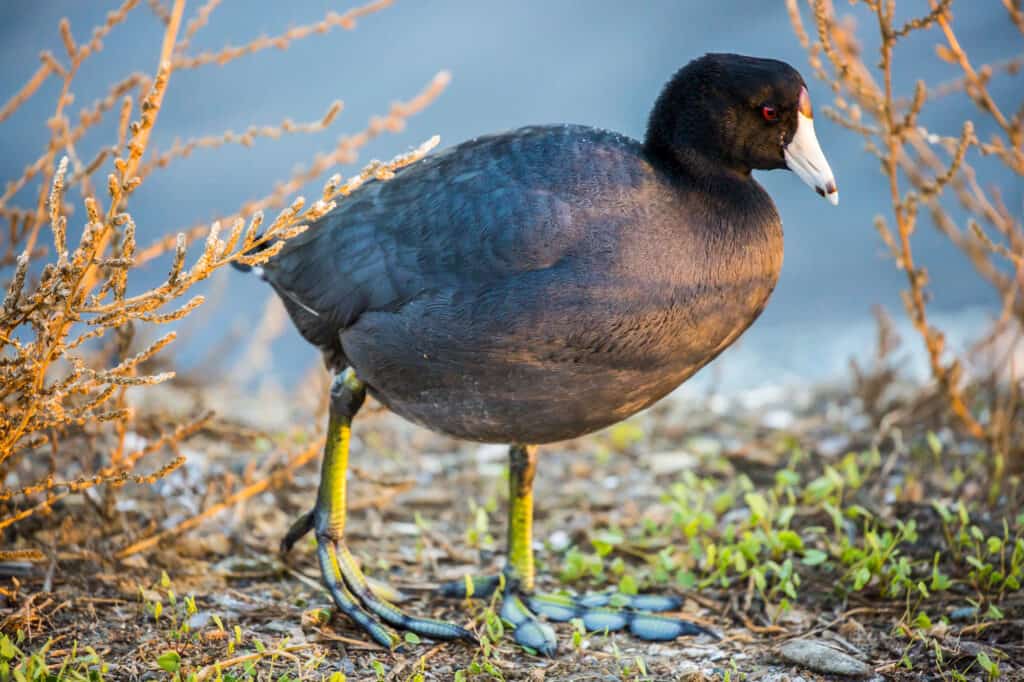
American coots are widespread across North America.
©yhelfman/Shutterstock.com
While it looks similar to a duck, the American coot is a whole different bird. This waterfowl features a smaller head, thin legs, dark bodies, white faces, and red eyes. They are widespread across North America, where they breed in Canada and the Northern United States and winter in the Southeast and Central America. However, there are year-round populations in the Western United States and Mexico.
7. Grebes
Least Grebe

Least grebes fully submerge their bodies underwater.
These tiny waterbirds are precious and fluffy, featuring dark brown plumage and bright yellow eyes. However, they can be difficult to spot due to their tendency to fully submerge their body in water with just their bills sticking out for air. The least grebe is a bird of brackish ponds and shallow freshwater, especially in tropical wetlands. This species lives year-round in South America, Central America, and along the Mexican coasts. But you can also find it as far north as Southern Texas.
Pied-Billed Grebe
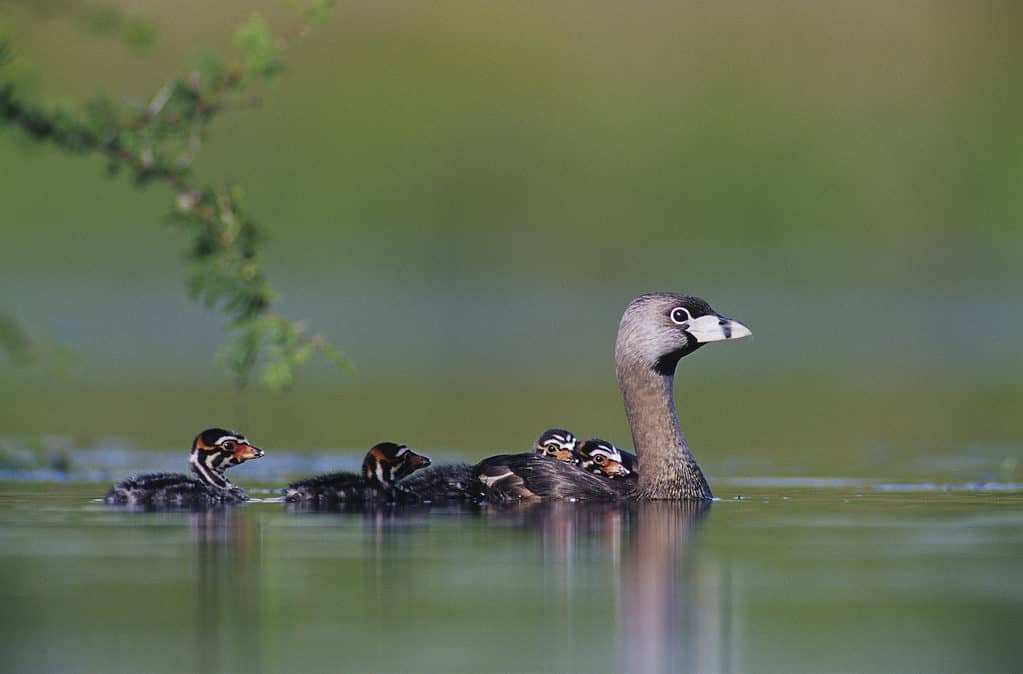
For the first few weeks of life, chicks often ride around and sleep on their parents’ backs.
©Danita Delimont/Shutterstock.com
These birds are similar to the least grebe in appearance, except they feature lighter brown feathers and dark eyes. And they prefer rivers, freshwater marshes, estuaries, and lakes. The pied-billed grebe lives year-round in South America, Central America, Mexico, and most of the United States. They breed in Canada and the Northern U.S.
8. Loons
Common Loon

Common loons are diving birds of the Canadian wilderness.
©iStock.com/BrianLasenby
Loons are aquatic diving birds with contrasting black and white plumage and bright red eyes. These birds breed in the Canadian and Alaskan wilderness, migrate through the United States, winter along the coastlines of Canada, the U.S., and Mexico. They live on seawater near the coastline or inland lakes and reservoirs.
Pacific Loon

Pacific loons are the most common loon species in North America.
©Sophia Granchinho/Shutterstock.com
The Pacific loon is similar to the common loon, except it sports a soft gray head. This species breeds in the Arctic landscape in Northern Canada and Alaska. And they winter along the Pacific Coast as far south as Baja California. They live in large flocks during the winter near estuaries, coastlines, and bays. And they are the most abundant loon species on the continent.
9. Scoters
Black Scoter
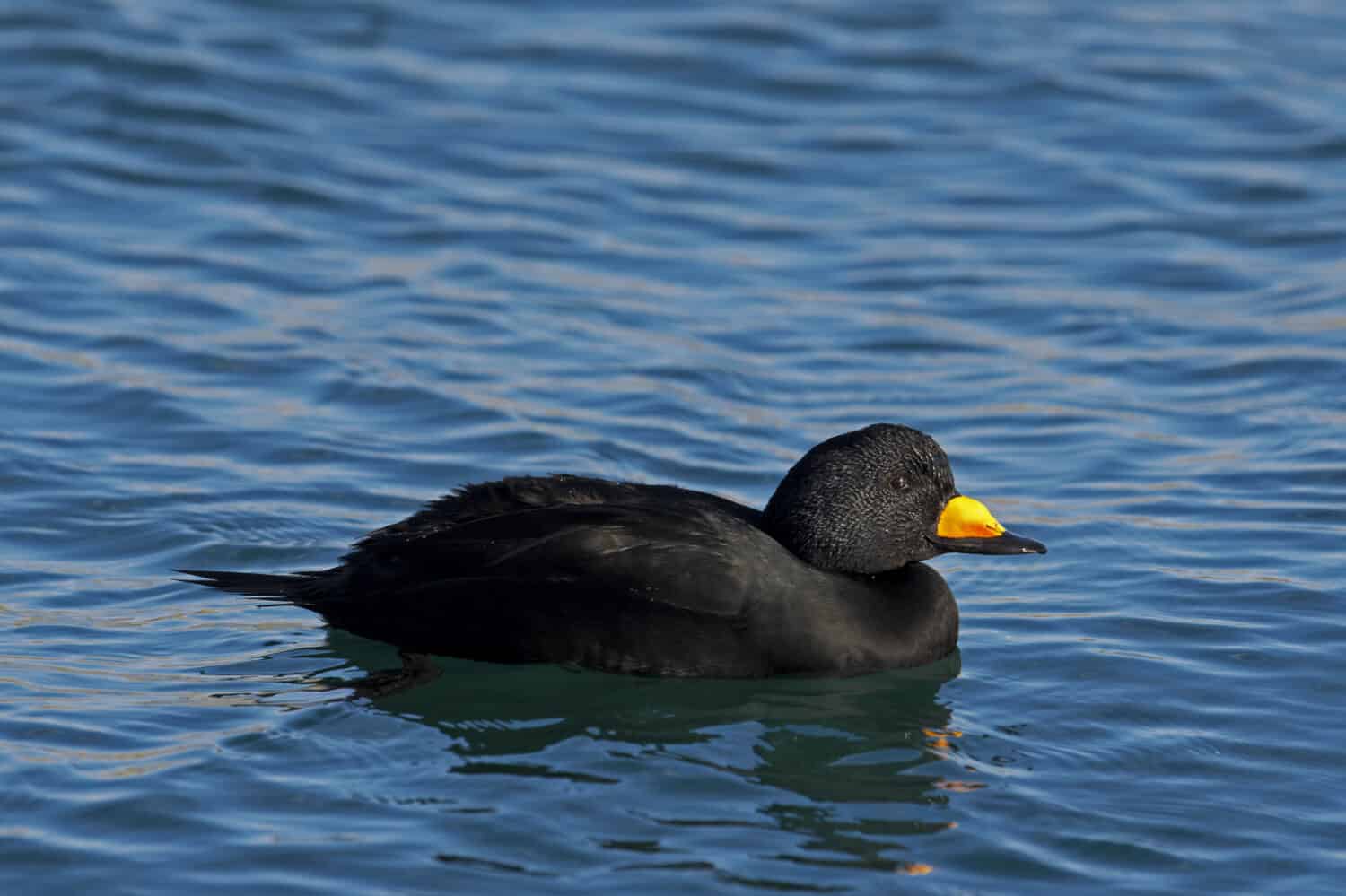
Black scoters are one of the most vocal types of waterfowl in North America.
©rock ptarmigan/Shutterstock.com
This black scoter is an all-black sea duck with an orange bill knob. It is one of the most vocal species of waterfowl, especially males communicating with their flock. These birds breed in Alaska and Eastern Canada and winter along the Pacific and Atlantic coasts, as far south as the Gulf of Mexico. While you will primarily find them in coastal waters, they can also pop up on inland lakes and reservoirs.
10. Teals
Cinnamon Teal
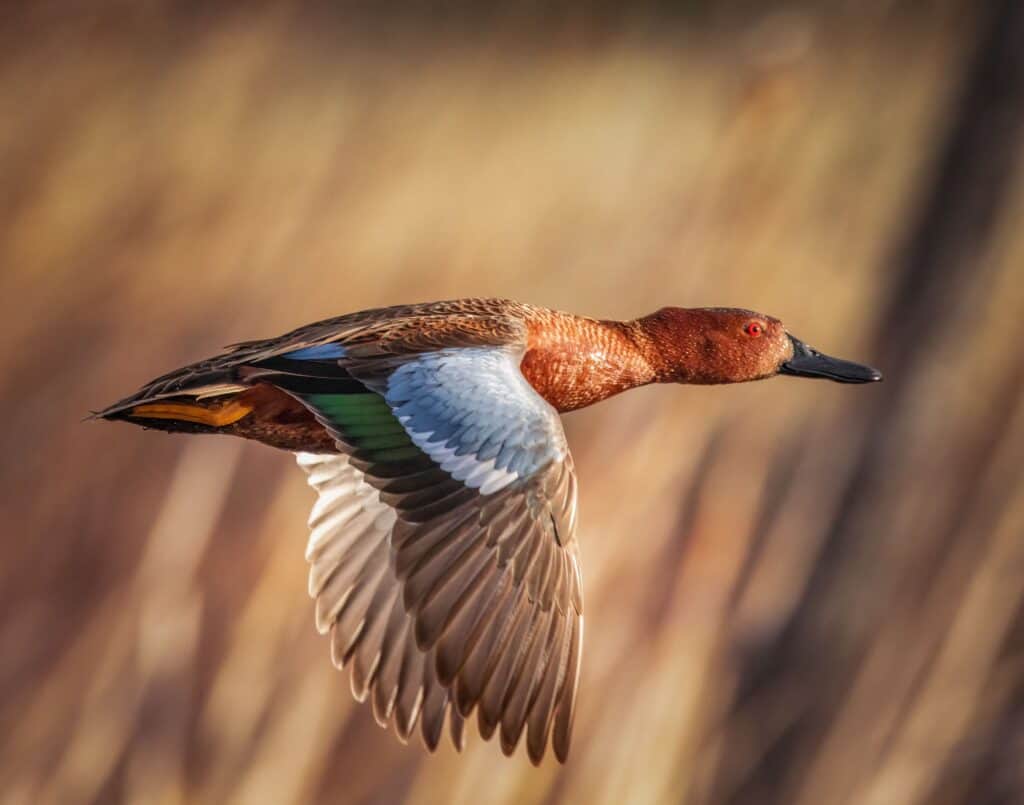
This waterfowl breeds in the Western United States and winters in Mexico.
©Wirestock Creators/Shutterstock.com
True to its name, the male cinnamon teal is a rich reddish-brown waterbird. Females are dull and mottled light brown. This waterfowl breeds in the Western United States and winters in Mexico. However, there are year-round populations in South America, Mexico, and along the California coast and parts of the Southwest. These birds live in reedy wetlands, where you will find them near matted vegetation.
Types of Waterfowl in North America: A Recap of the Top 10
| Number | Types of Waterfowl in North America | Examples |
|---|---|---|
| #1 | Geese | Canada goose, cackling goose |
| #2 | Swans | Trumpeter swan, tundra swan |
| #3 | Ducks | Mallard duck, wood duck |
| #4 | Mergansers | Common merganser, hooded merganser |
| #5 | Eiders | Common eider, king eider |
| #6 | Coots | American coot |
| #7 | Grebes | Least grebe, pied-billed grebe |
| #8 | Loons | Common loon, Pacific loon |
| #9 | Scoters | Black scoter |
| #10 | Teals | Cinnamon teal |
The photo featured at the top of this post is © rock ptarmigan/Shutterstock.com
Thank you for reading! Have some feedback for us? Contact the AZ Animals editorial team.







